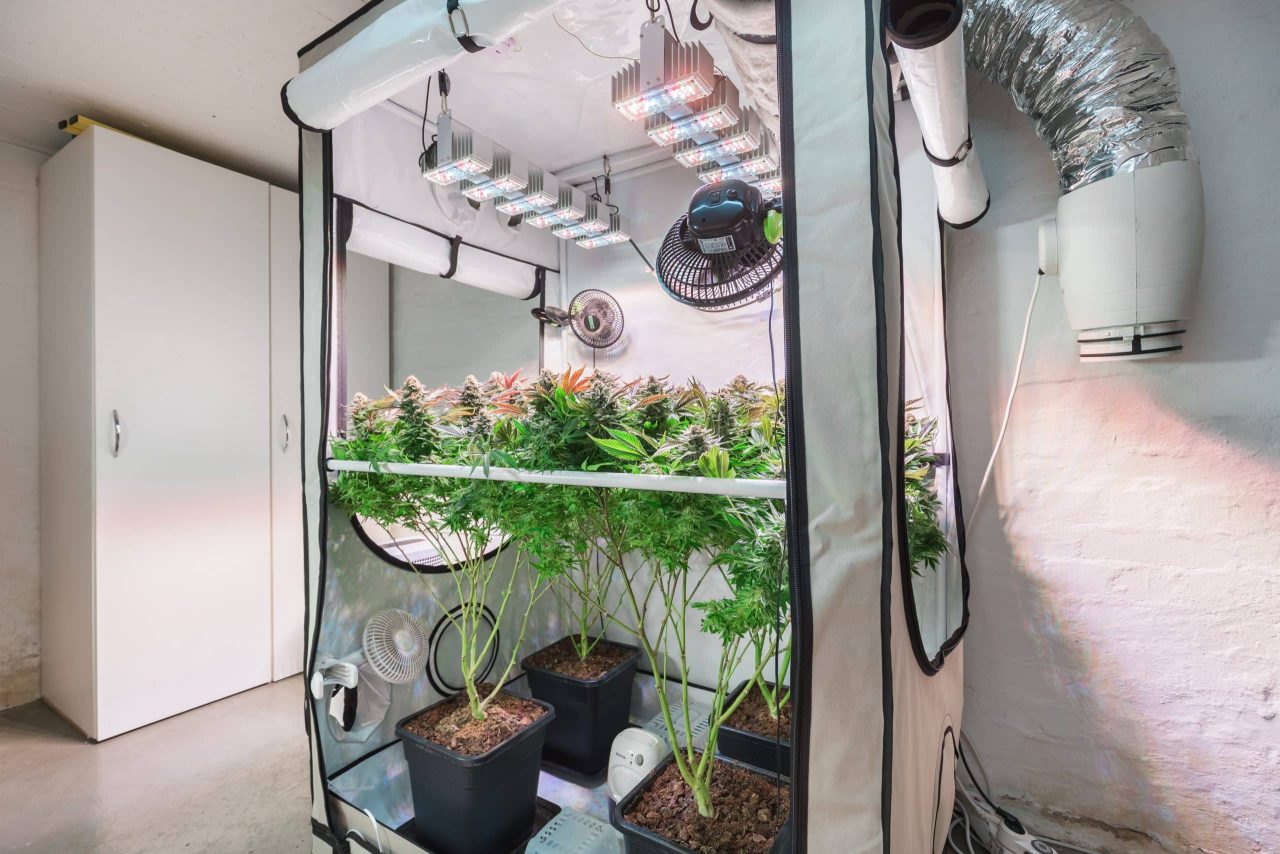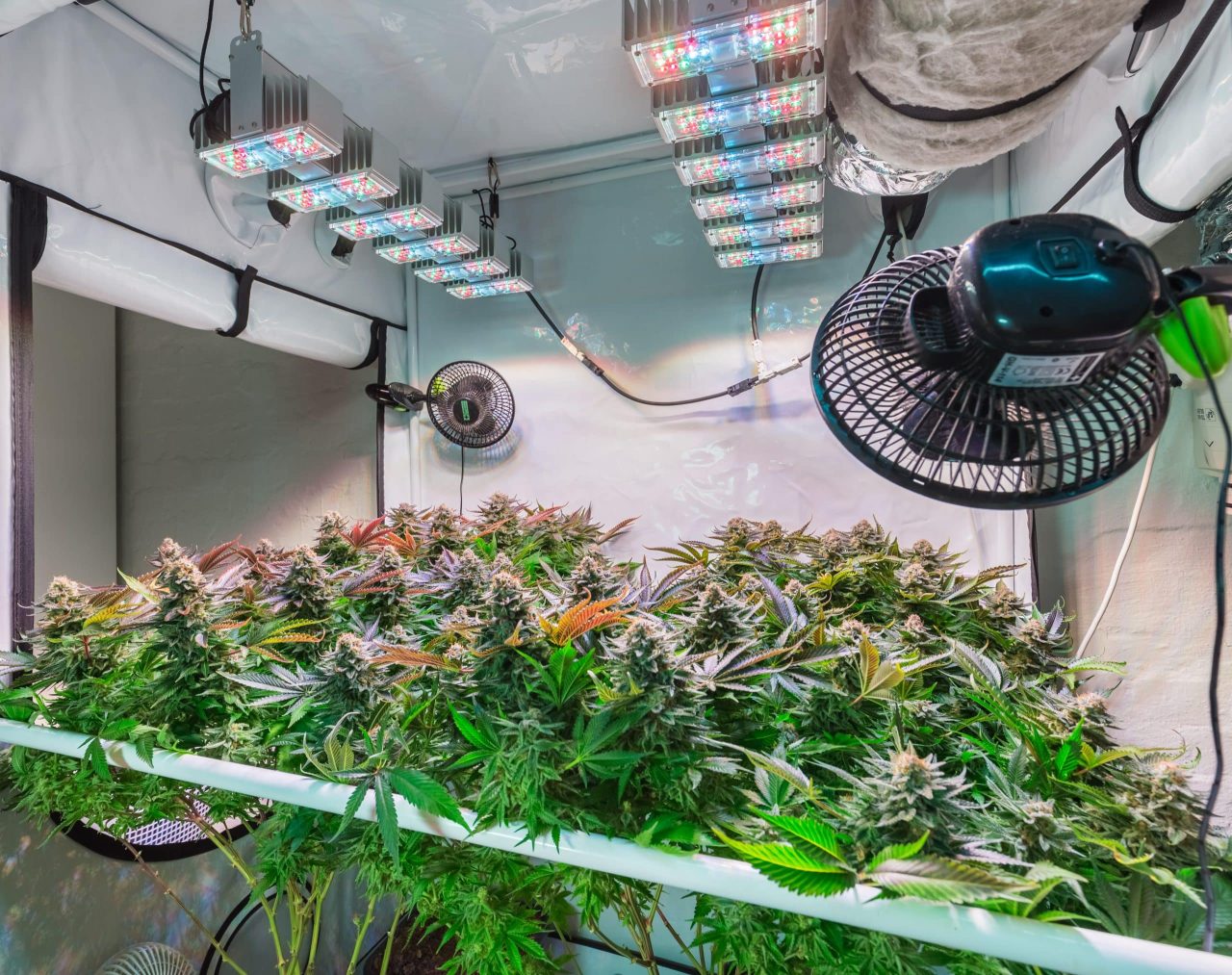Free Tropical Runtz seeds on orders over $150!
Carbon dioxide (CO2) has developed a negative connotation in recent decades. When people hear about it, they immediately think of pollution and global warming. However, nature has used this chemical for millions of years to power life systems long before humankind blasted vast amounts into the atmosphere.
Carbon dioxide (CO2) is to plants what oxygen is to people. They rely on this gas to perform vital physiological processes. They depend on CO2 so heavily that greater amounts boost output. Growers already magnify natural factors that increase cannabis plant vitality, growth, and production. They use strong lighting, concentrated fertilizers, plenty of helpful bacteria, and fans to simulate wind for their crop.
You can also improve the condition of your plants by adjusting the airflow inside the greenhouse. Increasing carbon dioxide concentration in the local atmosphere allows for lusher growth and higher harvests.
Cannabis plants need carbon dioxide (CO2) for photosynthesis, the process by which light is converted into chemical energy.
Cannabis plants “breathe” in CO2 to utilize it for photosynthesis. When living things take in oxygen and release carbon dioxide, CO2 is released into the atmosphere. Through respiration, plants can gather gas from the atmosphere. Stomata are small holes on a plant’s leaf surface that act like a pair of lungs. Plants use guard cells that control stomata using water pressure to open and shut these openings, similar to how humans actively use their diaphragm to drive air into the lungs.
The microscopic pores allow gaseous exchange between the plant and its environment as CO2 and oxygen diffuse. From there, carbon dioxide travels to the chloroplasts of plant cells. Sugars are synthesized from sunlight’s energy by pigments inside these cells. With the help of carbon dioxide (CO2) and water (H2O), plants can convert solar energy into glucose (sugar) and oxygen (O2). They exhale oxygen back into the air and use the carbohydrates for energy.
When growing cannabis indoors, there are additional considerations to ponder before you start injecting CO2 into your grow area. Your plant won’t gleefully soak up as much carbon dioxide as it can from the air. Brighter lighting and warmer temperatures are required to stimulate their hunger. The current CO2 level in the atmosphere is around 400 ppm (parts per million). CO2 levels, however, were remarkably stable between 3000 and 9000 ppm when plants began the journey from sea to land.
Plants retain part of their ancestral aptitude to use large amounts of CO2 (carbon dioxide). Many plant species, including cannabis, may use concentrations of CO2 as high as 1500 parts per million (ppm) to fuel photosynthesis. If you want to get the most out of your growth tent, you shouldn’t go over this number.

However, carbon dioxide (CO2) is only partially sufficient for photosynthesis. Without supplementary light, plants could care less about having access to abundant CO2. Using bright lights will boost your plant’s need for fuel. Light output in the growth tent should ideally range from 7,000 to 10,000 lux (or 75,000 to 107,000 lumens per square meter). You may achieve this with a 3′ by 3′ (about 1 m x 1 m) grow tent with a 600W HPS or LED light. You can check the brightness of your lights using a lux meter to ensure they are enough.
Plants thrive at warmer temperatures with more light and more carbon dioxide in the air. Optimal growth for cannabis is at around 25 degrees Celsius. Growers may raise the temperature by around 30 degrees Celsius by increasing CO2 and light intensity. The enzymes responsible for photosynthesis can function at peak efficiency at this temperature, which is called the thermal optimum. But be wary of going beyond that temperature. When temperatures rise by even a few degrees, the danger of heat stress rises because these vital enzymes begin to denature.
CO2 may stimulate cannabis growth and increase yields if you’ve maximized other limiting elements (particularly light). More carbon dioxide in the air makes plants more resistant to high temperatures. Cannabis plants can withstand temperatures as high as 95 °F (30 °C) when the air contains 1200-1500 PPM of CO2. It may help producers that use a lot of powerful lights to maintain the environment within a safe temperature range for cannabis plants.
Since CO2 enrichment requires closing your grow area, you won’t release any heated or odorous air via vents, which might increase your sense of safety. Adding CO2 via certain means, such as using a CO2 generator, may also produce odors that mask the smell of cannabis.
The optimal conditions for adding CO2 are a heated room with strong grow lights emitting infrared light. When combined with HPS, CO2 may boost plant growth by as much as 20 percent. Adding carbon dioxide has the same effect on other types of HID lights, such as LEC/CMH grow lights. In a hot grow environment, large-scale LEDs also boost development. Since CO2 was not the limiting factor for the plant, smaller LEDs or fluorescent grow lights (CFLs or T5s) may not notice any advantages from CO2 enrichment.
Increasing CO2 levels without enough lighting is pointless. For your plant to get significant benefits from the added CO2, you’ll need a high-pressure sodium (HPS), light-emitting diode (LED), or compact metal halide (CMH) grow light. Miniature light-emitting diodes (LEDs) and fluorescent tubes (T5s) often aren’t strong enough to provide appreciable effects with CO2.
When the temperature rises over 85 degrees Fahrenheit (27 degrees Celsius), the added CO2 has a significantly greater impact. Extra photosynthesis in plants requires heat. Adding carbon dioxide to a chilly grow chamber will unlikely provide noticeable benefits. If your grow room is cool, increasing the temperature will likely boost plant growth more than increasing CO2 levels.
Sealing up the grow space to keep CO2 from seeping out isn’t necessary if you’re adding a little CO2, but it is necessary if you’re attempting to maintain a substantial amount of CO2 (like the suggested 1200-1500 PPM).
Initial investment may be high for CO2 injection into a large growing space. The least expensive methods of adding CO2 are not sustainable in the long term, but they are perfect for “dipping a toe” into the water and seeing whether you like it. Although the greatest CO2 systems are more expensive initially, they save money in the long run. However, large-scale grow operations should weigh all available choices to boost yields before investing in CO2 since other adjustments (such as fine-tuning the growing environment) may have a greater impact and cost less money.
All CO2 producers function in the same basic manner. They’re hooked up to a CO2 controller, which will stop the gas flow when CO2 levels become too high and start up again when they drop. Some are more advanced and useful than others, of course. To ensure adequate CO2 levels, investing in a high-quality one is advisable.

Even if you have a standard CO2 meter, you may still regulate the amount of CO2 by opening and shutting a solenoid valve at predetermined intervals. Solenoid valves open and shut in response to an electromagnetic charge. Always ensure you understand the PPM of CO2 in the grow room.
A silicone tube carrying CO2 into the room is required, with one exit per plant located towards the base of the trunk. A 2m tube with perforations directed toward the plants’ core may encircle the growing space. Since carbon dioxide is a heavy gas, it should drop above the cannabis plants as it escapes. Fans may assist in circulating the CO2 so the plants can more efficiently take it in.
After everything is set up and ready to start, you’ll need to learn the ins and outs of CO2 utilization in plants. On day 21, it begins to contribute to the flowering stage. You’ll need to adjust your air filtration system so that the extractor runs for no more than 15 minutes every hour. All the CO2 will be eliminated if left on, rendering the endeavor futile. Using a separate timer, you can program the CO2 controller independently of the extractor’s operation. Only while the lights are on should CO2 be given. However, it would help if you left the extractor running continuously when the lights are off.
The cell walls of your plants will thicken and multiply fast when exposed to CO2. Be careful to give them enough fertilization at this time. The plants will be weak and yield little if exposed to too much CO2 without additional nutrients.
CO2 requires somewhat higher temperatures for plants, approximately 28-32ºC, so leaf water may drain quickly, and nutrients can be absorbed immediately. The plants aim to absorb the nutrients while releasing the excess water quickly. A dehumidifier is required to bring humidity levels down to acceptable levels. Humidity levels for growing cannabis will rise if the temperature is elevated and plant transpiration begins.
After understanding how to use carbon dioxide to boost cannabis yields, remember that a CO2 grow room is best for experienced growers who have exhausted the potential of their current growing setup and are looking for new ways to increase their harvests. Adjusting the CO2 levels affects how the plants carry out their fundamental processes, so it’s best to do it once you have a basic understanding of these processes and know what you’re doing. However, predicting how much CO2 quantities will increase yields is impossible.





Offers
This product is not for use by or sale to persons under the age of 18. This product should be used only as directed on the label. It should not be used if you are pregnant or nursing. Consult with a physician before use if you have a serious medical condition or use prescription medications. A doctor’s advice should be sought before using any hemp products. All trademarks and copyrights are property of their respective owners and not affiliated with nor do they endorse this product. These statements have not been evaluated by the FDA. This product is not intended to diagnose, treat, cure or prevent any disease. By using this site you agree to follow the Privacy Policy and all Terms & Conditions printed on this site. All products contain less than 0.3% Cannabinoid-compliant with applicable Federal Laws. Please make yourself aware of any and all applicable laws regarding hemp in your jurisdiction. Premium Cultivars accepts no liability or responsibility regarding germination laws in any specific locale state or national jurisdictions.THCA products are not available for shipment to the following states: Hawaii, Idaho, Minnesota, Oregon, Rhode Island, Utah, Vermont *Note: Products with Total THC content above 0.3% must not be shipped to these states.
We want to help you get your hands on the seeds you want, take 20% off your next purchase when you enter your email below!
We want to help you get your hands on the seeds you want, take 20% off your next purchase when you enter your email below!